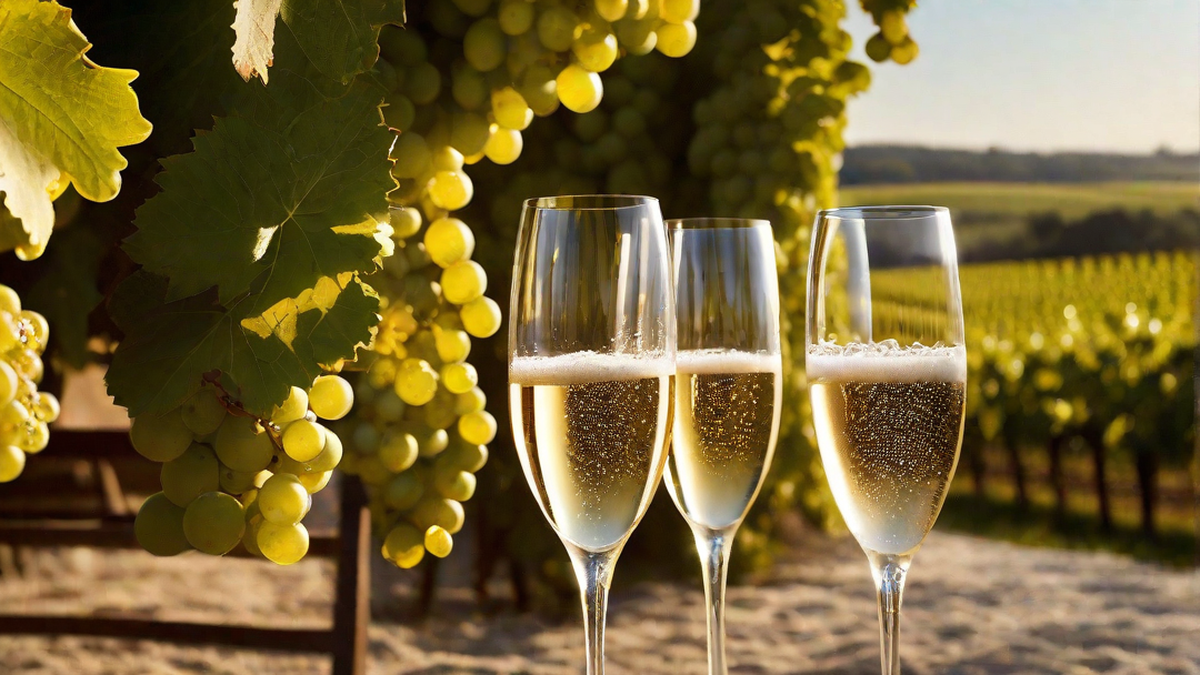Champagne, a symbol of elegance and celebration. The mere mention of it conjures images of popping corks and effervescent bubbles. But have you ever wondered how this luxurious beverage is produced? Join me on a journey as we explore the intricate and revered art of making champagne, a process that is meticulous and steeped in tradition.
The Vineyards and Grapes
It all begins in the sprawling vineyards of the Champagne region in France. This picturesque landscape is home to the three main grape varieties used in champagne production: Chardonnay, Pinot Noir, and Pinot Meunier. These grapes thrive in the cool climate and limestone-rich soil, lending the wine its characteristic finesse and complexity.
As I stroll through the vineyards, the earthy aroma of the soil and the gentle rustle of the leaves fill the air. The grapevines, meticulously pruned and trellised, bask in the warm sunlight, patiently ripening their precious fruit. It’s here, amidst this natural beauty, that the magic begins.
The Harvest and Pressing
As harvest season arrives, the vineyards buzz with activity. Skilled harvesters handpick each grape cluster, ensuring that only the finest fruit makes its way into the winery. The grapes are then swiftly transported to the pressing area, where they undergo a gentle pressing process.
Observing the pressing process, I’m struck by the fragrant juice that flows out. This juice, known as “must,” is destined to become the base wine for champagne. The pressing is done in multiple stages, with the first press yielding the highest quality juice, known as “cuvee,” and subsequent presses producing slightly lesser quality juice.
The Fermentation and Blending
Once the must is obtained, it’s time for the fermentation process to begin. The freshly pressed juice is transferred to stainless steel tanks or oak barrels, where yeast transforms the sugars into alcohol. This initial fermentation gives rise to a still wine, which forms the foundation of champagne.
Now comes the art of blending, where the winemaker carefully selects and combines different base wines to create a harmonious blend. This skillful craftsmanship allows the winemaker to achieve the desired flavor profile, balancing the fruitiness, acidity, and complexity of the champagne.
The Second Fermentation and Aging
After the blending process is complete, the winemaker introduces a crucial step that sets champagne apart from other sparkling wines – the second fermentation. The base wine is bottled, and a mixture of sugar and yeast, called “liqueur de tirage,” is added. As the second fermentation takes place, carbon dioxide is trapped within the bottle, creating those iconic bubbles.
As I step into the cool and dimly lit cellars, I’m surrounded by countless bottles quietly aging. The second fermentation continues inside each bottle, infusing the wine with richness and complexity. This aging process, known as “sur lie,” can last for months or even years, further enhancing the depth of flavors and creating the signature creamy texture.
Disgorgement and Dosage
After the desired aging period, the champagne is ready to undergo the disgorgement process. The bottles are carefully rotated and tilted, causing the sediment to settle in the neck. The neck is then frozen, and upon opening the bottle, the pressure forces out the frozen sediment, leaving behind a clear and pristine liquid.
Finally, the winemaker adds a small amount of “liqueur d’expédition,” also known as dosage, to balance the acidity and sweetness of the champagne. This step is crucial in determining the final taste and style of the champagne, ranging from bone-dry “Brut Nature” to lusciously sweet “Doux.”
Conclusion
The journey of making champagne is an intricate dance between nature and human craftsmanship. From the vineyards to the cellars, each step is imbued with passion and attention to detail. So, the next time you raise a flute of champagne, take a moment to savor not just the bubbles but also the centuries-old traditions and artistry that go into every sip.
